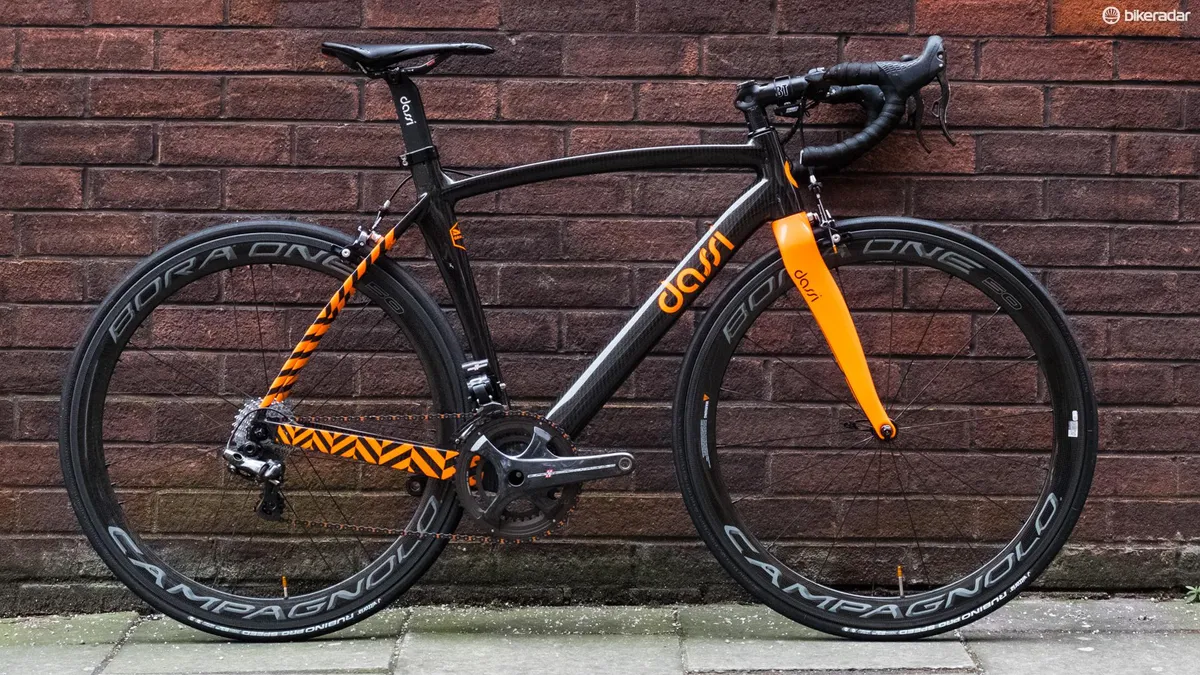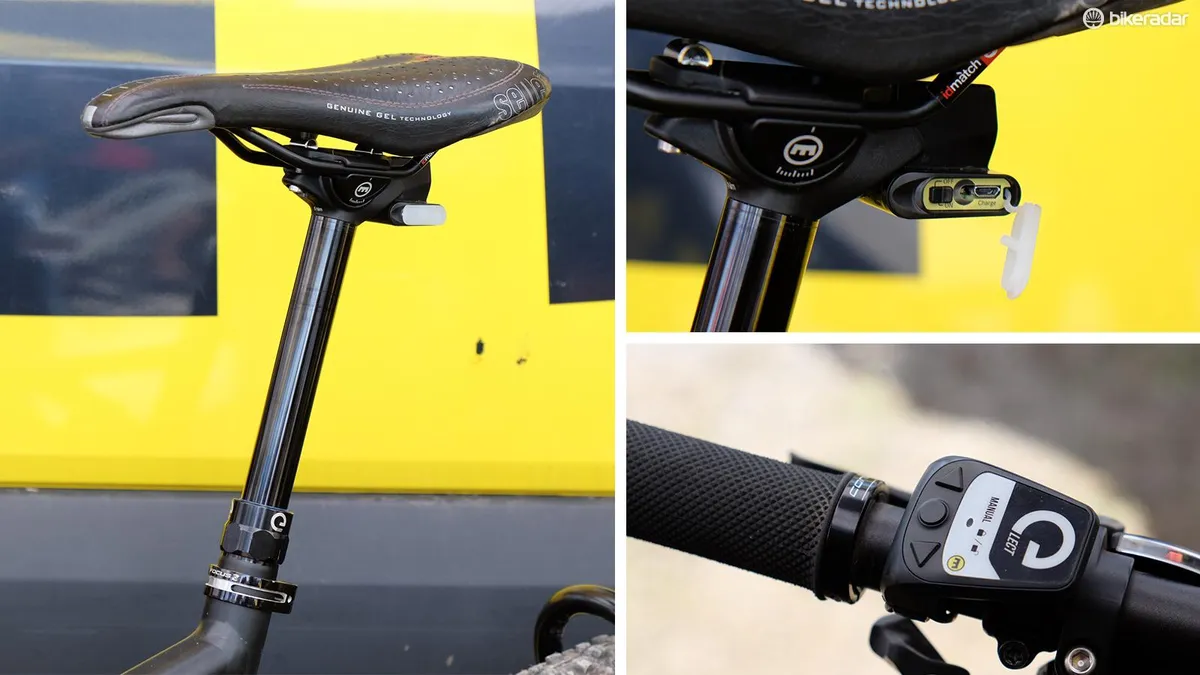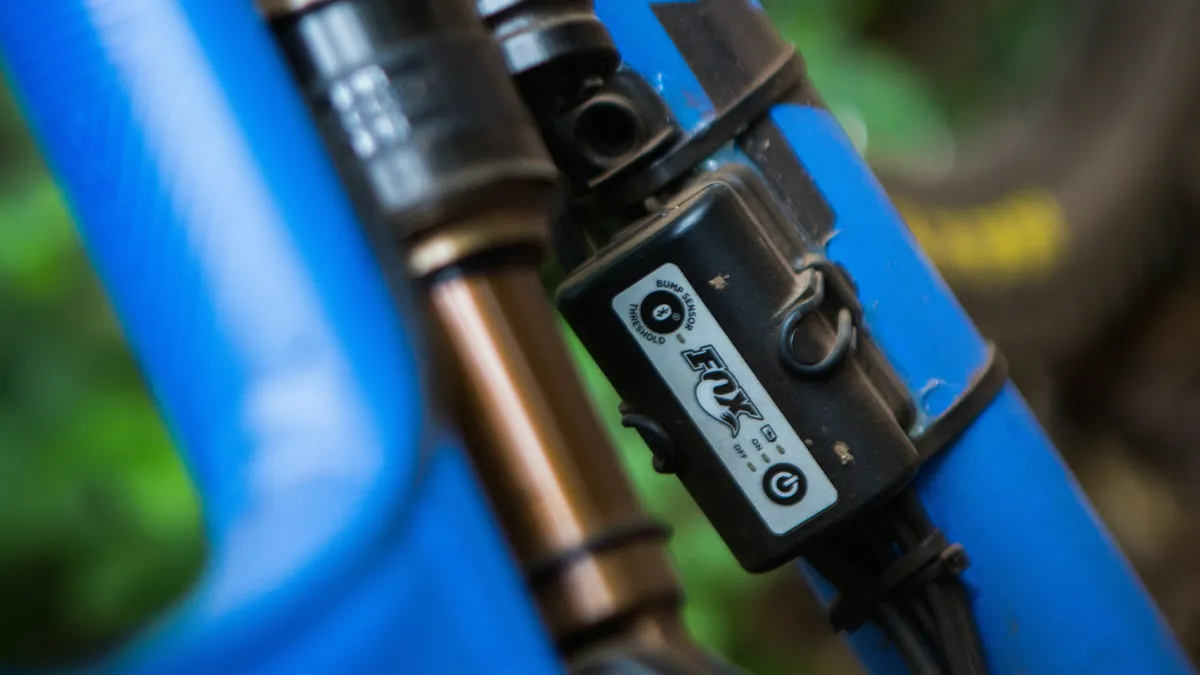We have a pretty good idea about what the immediate future of bikes holds, but what happens after that? Here are five technologies we’d like to see put to good use on two wheels.
For the full experience, watch our Top 5 video above. If you prefer the sound of your own voice, read on.
1. Graphene

Regular carbon is old hat these days. Sure, it’s brilliant for making those laterally stiff, vertically compliant bikes we all froth over, but the basic concept of laying up carbon with epoxy hasn’t changed all that much in recent years.The one-carbon-atom-thick wonder material graphene appeared on the scene a few years ago promising to revolutionise everything, but we’re still waiting for it to take over in bikes.
UK brand Dassi has already made a graphene road bike called the Interceptor. This incorporates the material in the resin that binds the carbon together, producing a stronger frame for a given weight.
The process is much the same as for standard carbon bikes and its designers reckon a 500g aero frame is achievable.
Graphene also has conductive properties that could be exploited in the creation of frames with some sort of built-in intelligence. The possibilities are intriguing....
2. Self-cleaning bikes

Imagine if you never had to clean your bike, ever again. How amazing would that be? Various non-stick and water-repellent coatings have been around for years, so why couldn’t we have them on our bikes? Back in 2014 Nissan treated a car with something called Ultra Ever Dry, and it seemed like mud just wouldn’t stick to it. The problem with such coatings is that they need regular application to work, so they’re not really a labour saving.
A permanent non-stick finish for bikes would be a godsend for winter riding, and what a difference it would make in cyclocross!
Washing bikes in winter is an unpleasant task, and one that can actually damage your pride and joy if you do it wrong and blast water into your bearings.
The bike of the future might just need a quick shake for all the mud to slide off.
3. Wireless everything

We’ve already got wireless gear shifting on the road and it will certainly appear on mountain bikes soon enough, but what about the rest of your bike’s components? Brakes, droppers and suspension could all be controlled wirelessly, making for cleaner, more user-friendly designs.
Magura has already made an electronic dropper called the Vyron, although a hefty price tag and lack of user-friendliness mean it’s not been terribly popular.
Imagine if you never had to route another cable through a frame, and if swapping your dropper post between bikes were as simple as undoing a single bolt and yanking it out.
More wireless kit would mean keeping extra batteries charged, but if it simplifies frame design, drops weight and makes maintenance easier, then we reckon the trade-off might well be worth it.
Convincing riders to use wireless brakes might be a little tricky, however.
4. Magnetorheological suspension

Modern mountain bike suspension is pretty incredible, combining light weight with truly impressive performance. At the moment, on-the-fly adjustments tend to be limited to climbing lock-outs and the like, but what if you could precisely adjust damping as you ride?
Fox’s never-quite-available Live Valve promises to offer something along these lines, but what we’d really like to see is a true magnetorheological damping setup as found on certain supercars such as the Audi R8.
Magnetorheological systems use a damping fluid containing tiny magnetic particles, whose behaviour can be controlled by electromagnets.
By precise adjustment of a magnetic field, the viscosity of the fluid can be altered.
In practice, that means you could radically adjust the feel of your suspension with the flick of a switch, or a computer could manage its behaviour for optimum performance.
Like electronic gears, such a system would need to be powered, and that brings us to our final piece of tech...
5. Piezoelectrics

Say what now? Piezoelectric materials generate a voltage when they are subject to mechanical stress, and this phenomenon can be exploited in some interesting ways.
Way back in 2008 researchers at a French university were able to demonstrate that a “piezeoelectric generator” could be used to produce a few milliwatts of power, theoretically enough to power a small LED light.
We’d love to see such a system employed to keep Di2 batteries topped up, or to power your Garmin on a bikepacking expedition. As more and more electronics make their way onto our bikes, the possible applications are multiplying.
There’s no such thing as a free lunch in engineering, but this is probably about as close to one as you’ll ever get.
These are the top 5 technologies we'd like to see applied to bikes
